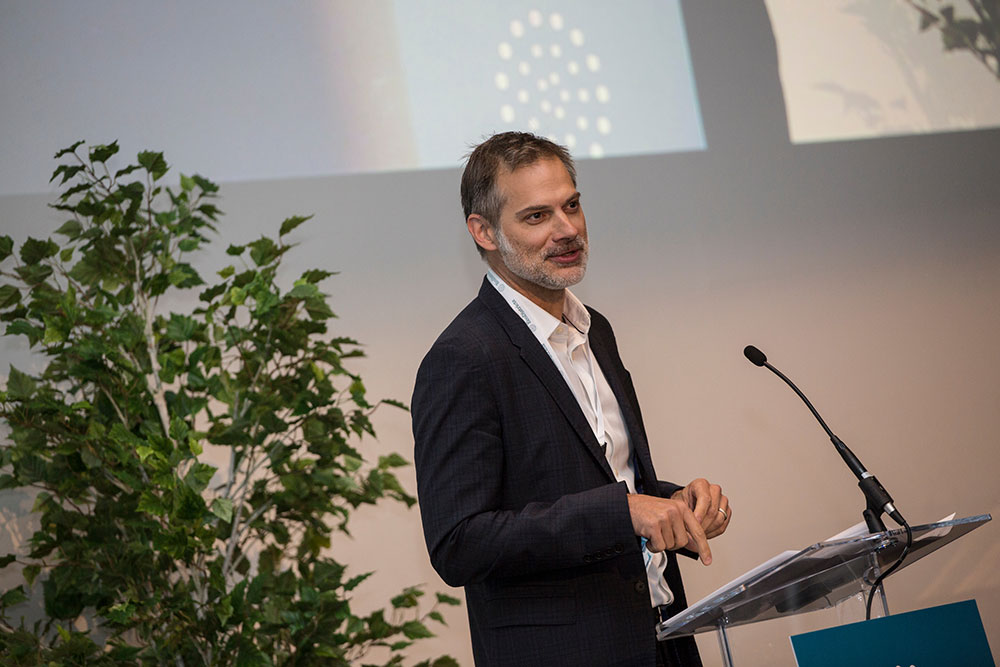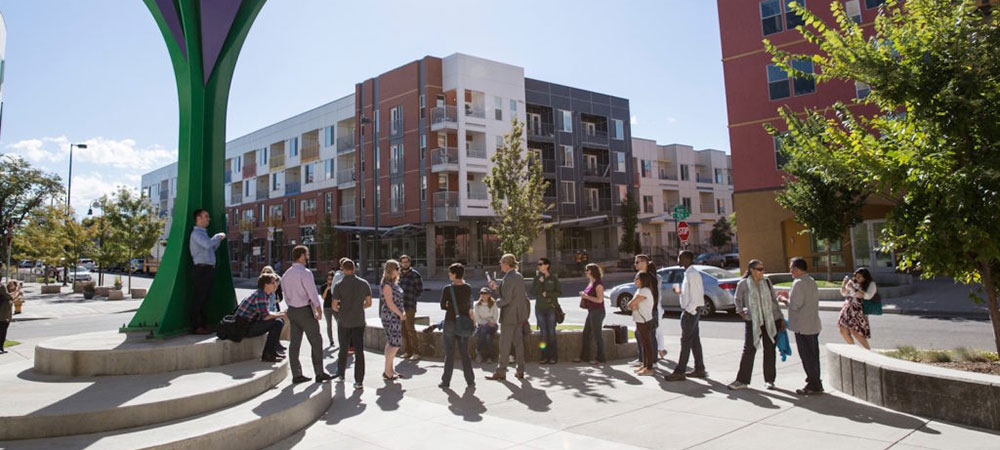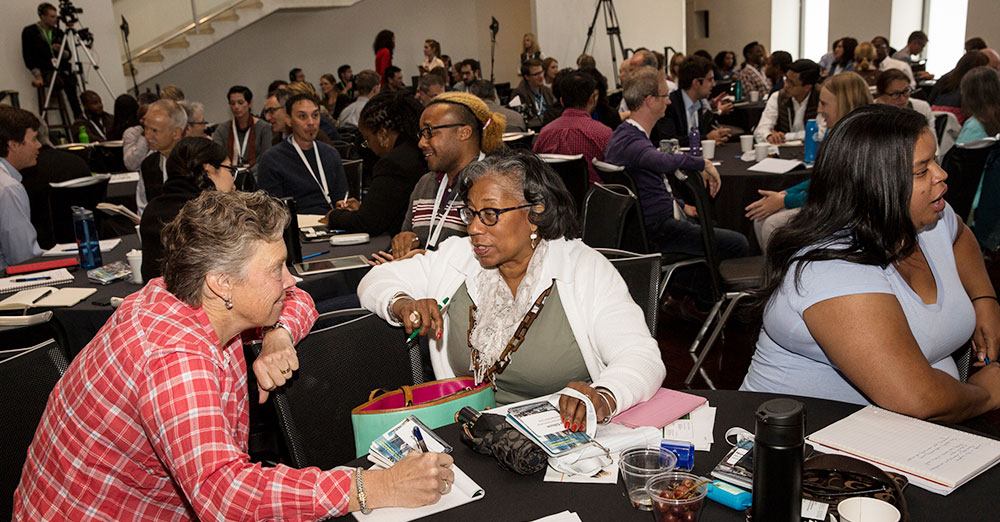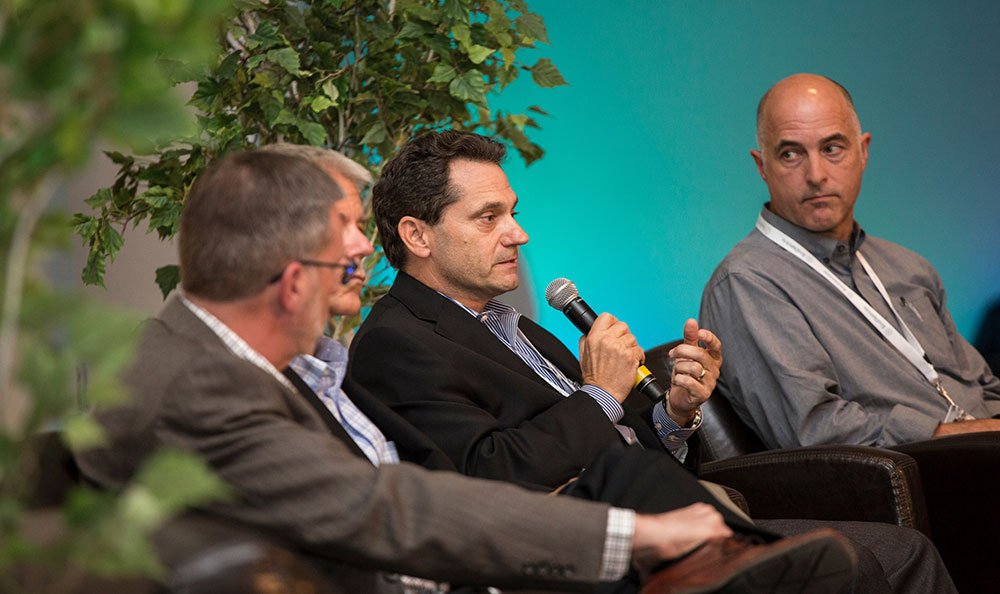Six Takeaways from the EcoDistricts Summit
The 2016 EcoDistricts Summit wrapped up nearly three weeks ago and we’re still buzzing. We feel fortunate to be able to produce such an event — the only gathering dedicated exclusively to neighborhood- and district-scale development in the world. The Summit provides our team a unique opportunity to bring a diverse and inspiring number of leaders together to share their stories and expertise in an intimate and human-scaled setting (sorry large conferences). In the end, we build new friendships and opportunities to connect our work in real and demonstrable ways. So, thank you to all of our attendees, speakers and provocateurs — we appreciate you taking time to make our 2016 Summit memorable and meaningful.
And thank you to Denver and surrounding front range communities that opened your doors and spent time unpacking your urban development journey and lessons learned to date. Warts and all.
I learned a lot in Denver and thought I would share my observations on some of the most important themes that emerged across these three days.
1. Infrastructure Must Be People- (and Planet-) Centric. Period.
Ryan Gravel kicked off the Summit with a provocative opening keynote on the necessity of developing urban infrastructure projects in service to people by emphasizing the building of community. As the father of the game changing Atlanta Beltline, a 22-mile former rail line that is being transformed into a pedestrian, bike and public transit corridor that is connecting 45 neighborhoods, activating over 4,500 acres of redevelopment, and catalyzing up to $20 billion in economic development, Ryan understands better than anyone the power of infrastructure investments to change a city. But Ryan also noted bluntly, that our cities leaders and public investments are not moving at a pace that is required to heal our cities. Even with the tremendous investment to date and almost universal enthusiasm, the Beltline will not be finished until 2030.
2. Duh. Neighborhoods are More than Real Estate and Infrastructure Deals.
As vital as Denver’s stunning Union Station and Atlanta Beltline have been in reconnecting community and spurring billions of dollars in urban redevelopment, successful neighborhood revitalization requires more than real estate development and infrastructure deals. In our Catalytic Placemaking plenary, we heard from developers who for decades have led “beyond the building” scale developments to address multiple issues, including housing affordability, community health and wellness, entrepreneurism, and food access.
Susan Powers from Urban Ventures provided an overview Aria, a 17.5-acre neighborhood redevelopment that includes 400 units of diverse and affordable housing, including intergenerational co-housing; urban farming and open space; and integrated health care delivery, all with an eye to being a catalyst for a neighborhood in transition. Zeppelin Development’s TAXI and The Source marketplace are two adaptive reuse projects that have catalyzed Denver’s formerly-industrial RiNo (River North) District through art, food and live-in-pace entrepreneurism (with an incredible attention to design and use of salvage materials along the way). Denver Housing Authority’s Mariposa neighborhood is a world class example of integrating affordable housing, social services and accessible transit into a holistic neighborhood that benefits some of the city’s lowest-income and most vulnerable residents.
3. Institutional Racism and Implicit Bias is the Elephant in the Room (and it’s not going anywhere).
Equity is becoming an extremely important and pressing issue for cities. The threat of gentrification and displacement is real in fast growing cities like Denver, San Francisco, New York and Boston, while increased levels of disinvestment and poverty bedevil progress in most others. There’s no doubt that equity — an issue that we’ve put front and center in the EcoDistricts Protocol and certification — can only be addressed by understanding the underlying pathology of institutional racial and socio-economic urban planning bigotry.
In a simple, and at times uncomfortable, Summit engagement session, Dr. Antwi Akom of I-SEEED and San Francisco State University (and an EcoDistricts board member) led attendees through an exercise on power and implicit bias. We came away with the realization that attempts to represent a community — especially communities of color — can be affected by our own implicit bias and regardless of intent, recreate many of the problems that we’re trying to solve in our urban redevelopment projects. Antwi reminded us why is so important to create authentic, collaborative processes and spaces for “people-powered” engagement and empowerment at all stages of the urban regeneration.
4. Civic Entrepreneurism is Exploding (and super inspiring).
Building on the notion of authentic, equitable development, we also need to engage in this work with an eye toward culture and art as tools for change.
Gülgün Kayim is leading such work in Minneapolis, where they are using art and culture to address the city’s One Minneapolis goal of eliminating racial, class and economic inequity. The City’s Long Range Planning Division engaged seven artists over 10 months to work with underserved communities to envision what their proposed long-range plans would look like, what they would include and who they would benefit. The result: 58 engagement events, more than 1,800 individuals reached (90% of whom had never engaged in planning before) and nearly 30 new engagement tools and strategies. Residents were able to voice their deepest needs as communities, and new goals have been created as a result, including initiatives to address digital equity, electoral engagement and creative asset mapping.
Through art, cities like Minneapolis can sift through the complex dimensions of culture and power to change the mechanics of planning and bring resident voices to the table.
5. The Pressing Environmental Challenge for Cities: The Water-Energy Nexus
More specifically, we explored how cities and communities can use water and energy investments to address environmental pollution, resilience, and mounting climate threats. According to the United Nations, cities produce 70 percent of the world’s greenhouse gas emissions and consume approximately 75 percent of the world’s energy. And, the EPA estimates that the average US family uses 400 gallons of water a day (twice the global average), while more than 65 percent of people in our nation alone are already affected by drought.
In our Mile High plenary discussion, we heard from leading energy and water experts and the conclusion was clear: the climate challenges we face beg for new business models and more cross-sector partnerships. We need to address the role of district-scale solutions to support a region’s ability to respond to the changing environment.
Denver’s own Mile High ZED initiative is a collaboration of four “innovation” districts — the new Denver Water Campus, the Sun Valley Ecodistrict, National Western Center and Peña Station NEXT, anchored by Panasonic’s CityNow smart city initiative in the City’s first so called aerotropolis. Led by the mayor and a diverse set of powerful stakeholders, Denver is poised to be a global center of neighborhood- and district-scale sustainability for years to come. And perhaps most encouraging — each project is collaborating to share information and influence policy to scale net zero development.
6. Building Community is the First Step Toward Building a Movement, but the Market Continues to be Disorganized
If we learned anything at the Summit, it’s that there is a dedicated community of practitioners who are genuinely interested in getting sustainable and equitable district-scale development done. Nearly 350 people packed our rooms each day, asking tough questions and gaining knowledge from their peers that they’ll take home to cities from Atlanta, Georgia to Brisbane, Australia. EcoDistricts’ convenings, like the Summit and Incubator, are our way to bring these city makers together.
But with so many projects, practitioners and rating tools out there, we need more organization in the noisy, messy marketplace of district-scale development. That’s why we’ve launched EcoDistricts Certified and EcoDistricts Accredited Professional (AP) — programs designed to reward the highest level of performance in district scale sustainability, putting people and planet at the center of every urban development decision. Certification focuses on three core phases in neighborhood-scale sustainability: achieve meaningful and long lasting collaboration; advance deeply integrated and performance-driven projects; and deliver powerful outcomes across equity, resilience and climate protection.
Some of these themes are no-brainers — we need to focus on local energy and water solutions to combat climate change and create more human and people-serving infrastructure. Others are tougher and more uncomfortable, like acknowledging the decades of racism and bias that have created cities that unfairly serve and treat communities of color and low-income citizens. Getting to a more equitable neighborhood development starts with first understanding the underlying issues that hold us back from a more perfect union. More than anything, the issues that we discussed are big and messy, and require a dedicated movement of diverse practitioners to tackle. And that’s what we saw emerging at the 2016 Summit — the collective power of hundreds of city makers whose enthusiasm, skill and influence, coupled with the right tools, guidance and collaboration, are creating the kind of equitable and resilient neighborhoods that we need.
We would love to hear from you. Drop me a line by email and tell me what you took away from the 2016 EcoDistricts Summit. I will collect your feedback and post it in an upcoming blog post.
From the neighborhood up!







